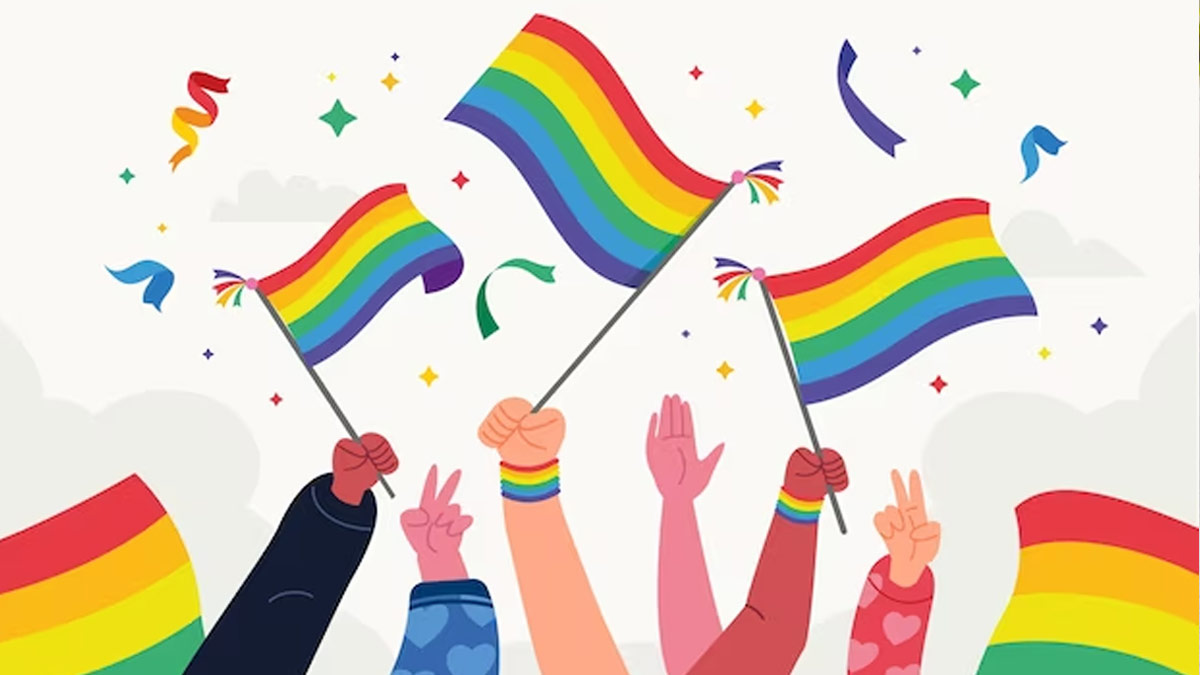
LGBTQIA Full Form: Get Acquainted With All The 7 Letters That Represent The Queer Community
You must have heard LGBTQIA+ or LGBTQ+ being used to refer to people who identify as queer. Do you know what it stands for, who coined it, and why we started using it?
This article explains what the acronym stands for and its history. It recognises, includes, and encompasses various gender and sexual identities.
What Does LGBTQIA+ Stand For?

L: The letter ‘L’ refers to lesbian, a term used for women, who are romantically and sexually attracted to other women.
G: The alphabet ‘G’ stands for gay. Popularly, it refers to men who are sexually and romantically attracted to other men. However, it is an umbrella term used for people who are attracted to people of the same gender.
B: In the LGBTQIA+, ‘B’ stands for bisexual people who are romantically and sexually interested in people with more than one gender.
T: ‘T’ in the acronym stands for transgender (Understanding Transgender People). It is also an umbrella term used for people whose gender identity is different from what they were brought up with since birth. ‘T’ is also used to refer to trans-sexual people (people who choose to transition from one assigned sex to the one they identify with).
Q: The letter Q in the acronym is used to refer to people who do not identify as heterosexuals. The word originally meant ‘peculiar’ or ‘strange’, however, in the late 20th century, it was redefined to be used to denote the entire LGBTQIA+ community.
I: ‘I’ stands for intersex. Individuals who have a natural variation in their body, and it is different from the biological construct of male and female are referred to under this term.
1
2
3
4
A: ‘A’ in the acronym refers to asexual individuals who do not feel sexual or romantic attraction to anyone.
The ‘+’ in the LGBTQIA+ refers to other members of the community, including demisexual, graysexual, agender, non-binary, sapiosexual, polyamorous, genderfluid, pansexual, and more.
Don't Miss: Unravelling LGBTQ Stereotypes And Their Impact On Society
History And Origin Of LGBTQIA+

If we look at history, ‘L’ was the first word that came into existence, and it was associated with an ancient Greek writer, Sappho. She belonged to the island of Lesbos and is known for her poems describing passion between people with same-gender identities. The oldest term to define homosexual relations can be traced back to the 17th century.
In the 19th century, Karl Heinrich Ulrichs coined the term ‘Urning’ to define men, who were interested in romantic relationships with other men. He used the words like ‘homosexuality’ and also coined the term ‘bisexual’.
In the 20th century, ‘gay’ was widely used to define relationships between people of the same genders. By 1990, T got added to the LGB acronym. It took a long time for the community to accept transgender people. By the 2000s, LGBT rights movements started taking shape.
Don't Miss: Your Favourite Celebrities Embracing Gender Neutral Fashion
‘Q’ has been added to the acronym quite recently, although it has been in use for a long time. Many refer to ‘Q’ for questioning individuals who are still exploring their gender and sexual identities.
The acronym is still evolving. ‘I’ and ‘A’ have been added to it recently. But the LGBTQ+ acronym has been in use for decades now. Some people write LGBTQIA+. In both cases, ‘+’ encompasses all other gender identities and sexual orientations.
Stay tuned to HerZindagi for more.
HerZindagi Pride Month: Redefining narratives, fostering awareness and a world of inclusion with thought-provoking stories around LGBTQIA. Get more awareness aboutLGBTQIA (Pride Month) by reading inspiring stories that will help you to open up without hesitation. #LivingWithPride
Also watch this video
Herzindagi video
1
2
3
4